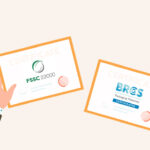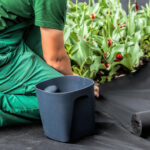There is growing concern about the use of BPA in plastics, especially when it comes to food packaging. BPA, or Bisphenol A, is a chemical used in many plastic products. Research has shown that BPA can seep into food or drinks, especially when heated. This can pose health risks over time, such as hormonal issues and other health problems.
Because of these concerns, more consumers are now choosing BPA-free products. BPA-free plastics, like polypropylene, do not contain this harmful chemical, making them safer for everyday use.
BPA-free polypropylene is a great option for food packaging. It is safe, and strong, and doesn’t release harmful chemicals, even when in contact with food. This makes it a reliable choice for keeping food fresh and protected.
What is BPA and Why is it Harmful?
BPA, or Bisphenol A, is a chemical found in many types of plastics. It helps make plastic strong and clear, which is why it’s often used in items like food containers, water bottles, and plastic wraps. While BPA has its uses, it can be harmful to our health.
When BPA is used in plastic products, it can leak into food and drinks. This is especially true when the plastic is heated or worn down. Studies show that BPA can disrupt hormones in our bodies. Hormones help control many important functions, like growth, mood, and reproduction.
Exposure to BPA has been linked to various health problems. Some research suggests it may lead to issues like obesity, diabetes, and even heart disease. Because of these risks, it’s important for consumers to be aware of BPA in plastics and to look for safer, BPA-free alternatives.
Why is BPA-Free Polypropylene Considered Safe for Food Packaging?
BPA-free polypropylene fabric is considered safe for food packaging because it is non-toxic. This means it does not contain harmful chemicals that could affect our health. When using polypropylene, you can feel confident that it won’t leach any dangerous substances into your food.
One of the great things about BPA-free polypropylene is that it resists leaching, even when it comes into contact with heat, moisture, or acidic foods. For example, you can safely use it in containers for hot soups or sauces without worrying about harmful chemicals getting into your meal. This makes it an excellent choice for storing a wide range of foods.
Additionally, many food safety organizations, including the FDA (Food and Drug Administration), have approved the use of BPA-free polypropylene in food packaging. This approval ensures that it meets strict safety standards, so consumers can trust it for everyday use.
Key Benefits of Using BPA-Free Polypropylene for Food Packaging
BPA-free polypropylene offers many benefits for food packaging, making it a reliable choice for both manufacturers and consumers.
First, it is durable and versatile. It works well for different types of foods, whether you’re packaging liquids like soups or solids like snacks. Its strength ensures that the packaging won’t easily tear or break, keeping food safe and fresh.
Next, polypropylene is lightweight but still strong. This makes it perfect for reusable packaging options. You can use the same container multiple times without it wearing out quickly. It’s also easy to carry and transport, which is helpful for both everyday use and large-scale food packaging.
Finally, BPA-free polypropylene is cost-effective and recyclable. It’s an affordable material, which helps keep packaging costs low. Additionally, since it can be recycled, it supports eco-friendly practices, reducing waste and promoting sustainability in food packaging.
Applications of BPA-Free Polypropylene in Food Packaging
BPA-free polypropylene is widely used in many everyday food packaging products. For example, you will find it in food containers that store leftovers, lunch boxes for school or work, and reusable bags for groceries. It is also used in packaging films that keep snacks and other foods fresh.
Many industries benefit from using BPA-free polypropylene. In the food delivery business, companies often use it for safe and reliable packaging that keeps meals warm and intact during transport. Grocery stores use it for bags and containers, allowing customers to buy and carry their groceries without worry.
Storage solutions also take advantage of this material. Many people use BPA-free polypropylene bins and boxes to store food items at home. These products help keep food organized and safe, making them a smart choice for both consumers and businesses. Overall, BPA-free polypropylene is an essential part of modern food packaging.
How to Identify BPA-Free Polypropylene Packaging?
Identifying BPA-free polypropylene packaging is simple if you know what to look for. Here are some helpful tips for consumers:
- Check the Label: Many products will have labels or tags that clearly state “BPA-free.” Always look for this information when buying food containers or packaging.
- Look for Recycling Codes: Plastics have recycling codes that help you identify what type of material they are made from. Polypropylene is often marked with the recycling code #5. If you see this code on a container, it usually means it is made from polypropylene and is likely BPA-free.
- Certifications: Some brands might have certifications that confirm their products are BPA-free. Look for logos or seals from recognized organizations that focus on health and safety.
In conclusion, BPA-free polypropylene is a safe and reliable choice for food packaging. Its durability, lightweight nature, and recyclability make it an excellent option for consumers and the environment. By choosing BPA-free products, you not only protect your health from harmful chemicals but also support eco-friendly practices. Make informed choices and opt for BPA-free polypropylene for a safer and greener future.




